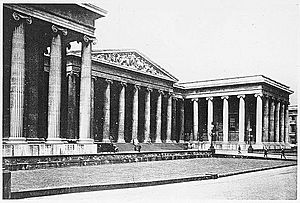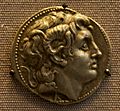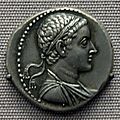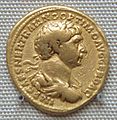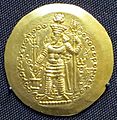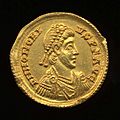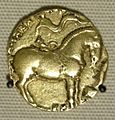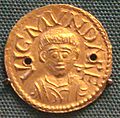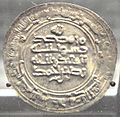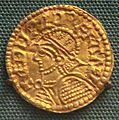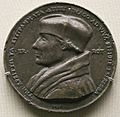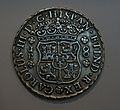British Museum Department of Coins and Medals facts for kids
The British Museum Department of Coins and Medals is a special part of the British Museum. It collects, studies, and shows off numismatics. Numismatics is the study of coins, medals, and paper money. This department has the biggest collection of these items in the United Kingdom. It holds almost one million coins, medals, tokens, and other related objects. The collection covers the history of money from its very beginnings around 700 BC until today. It includes items from both Eastern and Western cultures.
Contents
History of the Collection
The study of coins was a big part of the British Museum's first collection. This collection came from Sir Hans Sloane in 1753. It included about 20,000 coin-related items. At first, these items were part of the Department of Antiquities. But in 1860–1861, a separate Department of Coins and Medals was created.
The department has grown its collection in many ways. They buy new items, and people also donate or leave items to them in their wills. Famous collectors like Clayton Mordaunt Cracherode and Sarah Sophia Banks have helped a lot. A very strong part of the collection is British coins from all time periods. This is thanks to an old law called Treasure Trove. This law lets the museum buy important hidden collections of gold and silver coins. Many of these were buried long ago during times of trouble or change.
Today, about 9,000 coins, medals, and banknotes are on display at the British Museum. More than half of these are in the Citi Money Gallery (Gallery 68). The rest are shown in other parts of the museum. If you want to see more items from the full collection, you can make an appointment to visit the Study Room.
The department celebrated its 150th birthday in 2011.
Learning and Exhibitions
The Department of Coins and Medals does a lot of research. This research helps them create publications, exhibitions, and other activities. They publish special books called the British Museum Catalogues of Coins. These books share what they learn about coins.
They also create exciting exhibitions for the public. These shows help people learn about money and history. Some past exhibitions have explored topics like:
- 2000 years of coins and medals
- Art of the Medal
- Money: from Cowrie shells to credit cards
- As good as gold: 300 years of British banknote design
- Fake? The art of deception
- The Hoxne Treasure: an illustrated handbook (about a famous hidden treasure)
- Magic coins of Java, Bali and the Malay Peninsula
- Rebels, pretenders and imposters (about people who tried to take power)
- Chairman Mao badges: symbols and slogans of the Cultural Revolution
- Money in Africa
- Coins and the Bible
- Hoards: Hidden History (about buried treasures)
- Playing With Money: Currency and Games
People Who Work Here
The people who work in this department are experts in many fields. Besides being numismatists (coin experts), they are also skilled in languages, history, archaeology, art history, and more.
Keepers (Heads) of the Department
The "Keeper" is the head of the department. Many important experts have held this role over the years. Some of them include:
- William Sandys Wright Vaux, the first Keeper, starting in 1861.
- Reginald Stuart Poole, who became Keeper in 1870.
- George Francis Hill, who took over in 1912.
- John Allan, Keeper from 1931.
- Joe Cribb, who was Keeper from 2002.
- Philip Attwood], who was Keeper from 2010.
- Tom Hockenhull], who became Keeper in 2022.
Other Staff Members
Many other talented people work in the department. They include researchers, curators, and other specialists. They all help to study, care for, and display the vast collection of coins and medals.
See also
- British Museum Catalogues of Coins
- Numismatics
- Silk Road numismatics
- Digital Book Index
Gallery
-
A gold coin from Croesus, an ancient king from what is now Turkey, around 550 BC.
-
A Tetradrachm coin with the head of Alexander, from Greece, about 305-281 BC.
-
A Tetradrachm coin made for Ptolemy V, from Greece, 204–181 BC.
-
A gold coin from Bactria, Afghanistan, 4th century AD.
-
A gold coin of Emperor Honorius from the Hoxne Hoard, England, 4th-5th centuries AD.
-
A gold coin of Kumaragupta I, from the Gupta Empire in India, 415–455 AD.
-
A coin of Nasr II from Nishapur, central Asia, 921-922 AD.
-
A gold coin called a mancus from Aethelred II, England, 1003-1006 AD.
-
A Chinese Ming banknote for 1 guan, from China, 1375 AD.
-
A Renaissance medal of Desiderius Erasmus, made by Quentin Massijs, Holland, 16th century AD.
-
A collection of 78 Persian silver coins from Sharjah, United Arab Emirates, late 17th century AD.
-
An 8 Reales silver coin made in Potosí, Bolivia, 1770 AD.


